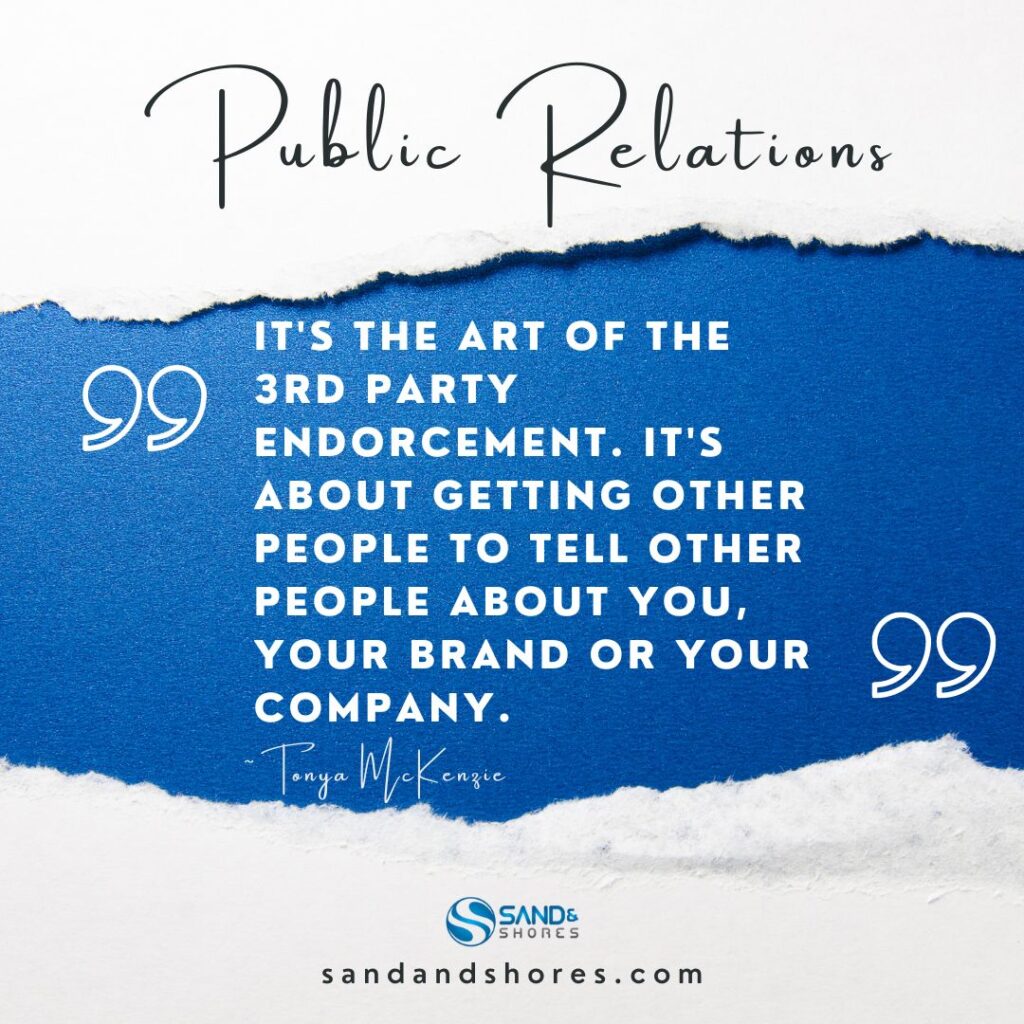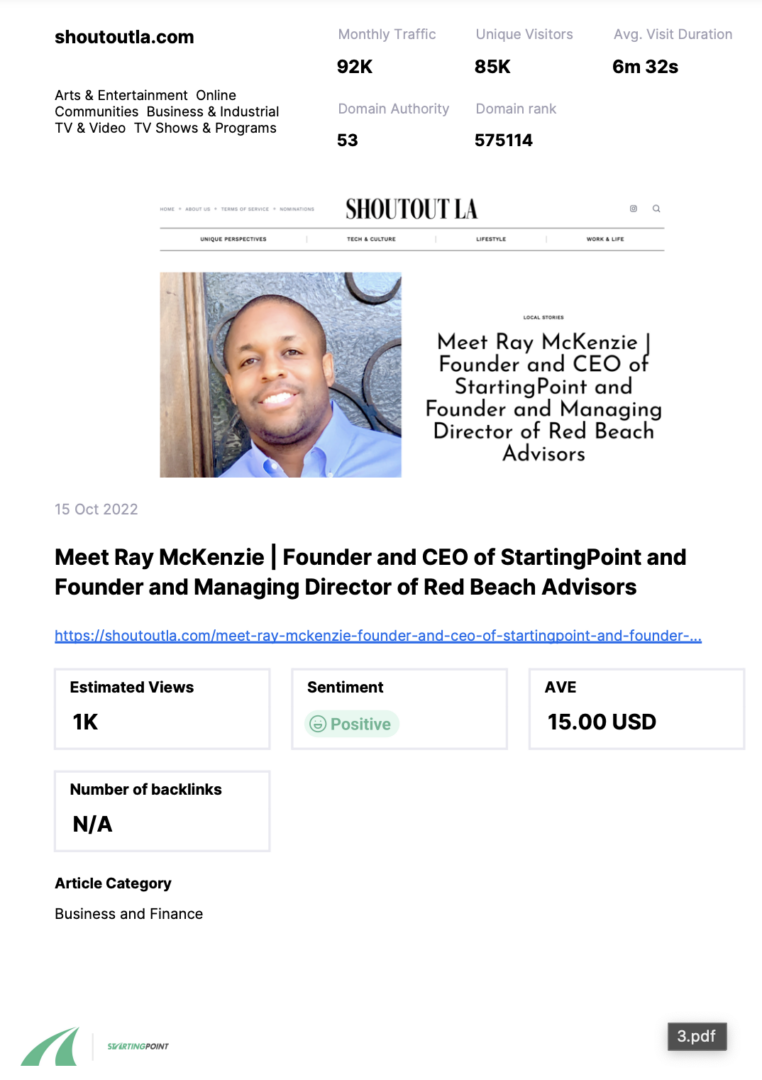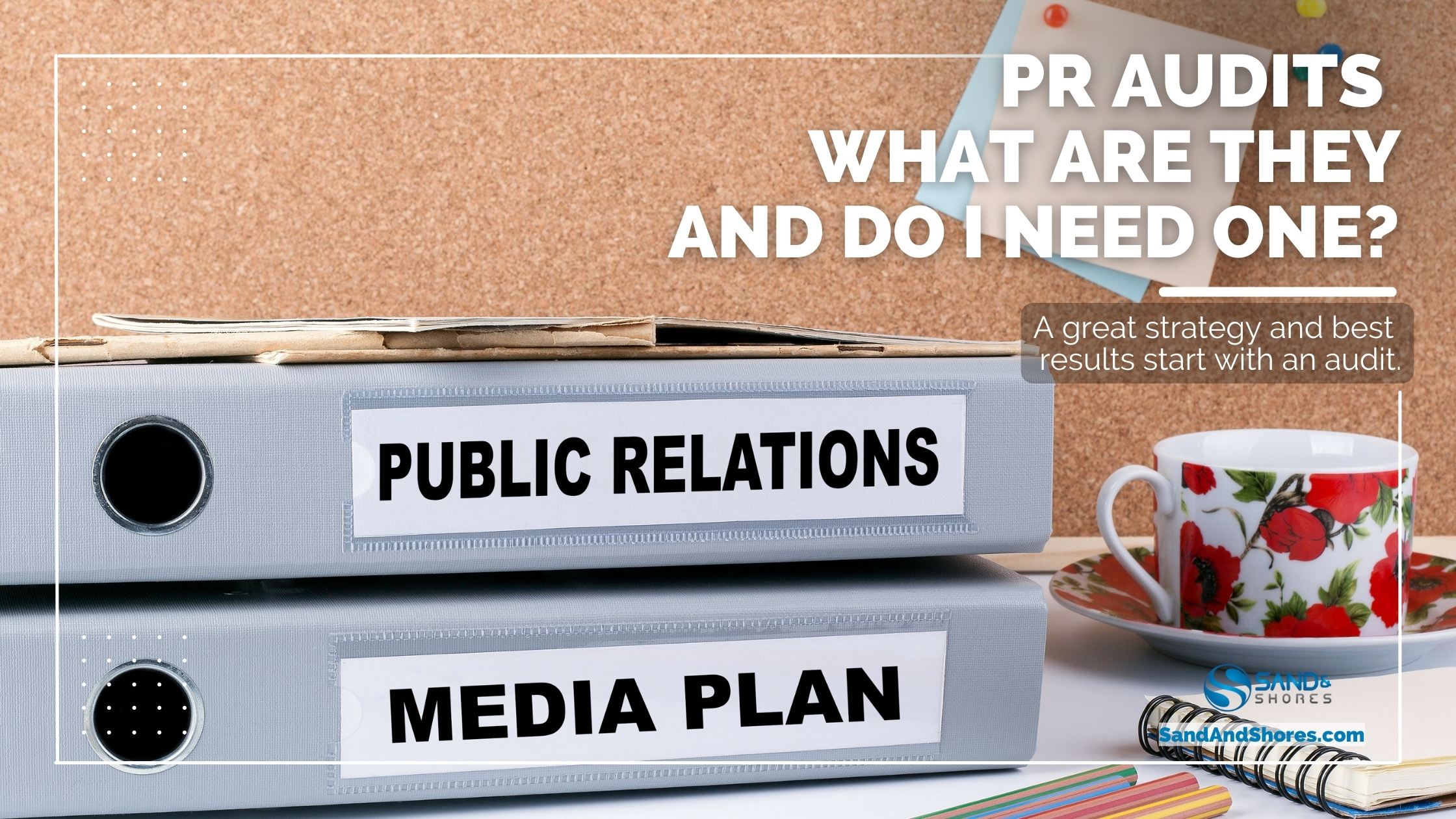by Tonya McKenzie
If you approach marketing and public relations as a solution for your businesses, you will optimize your results. To grow brand awareness, establish thought leadership, and build a strong reputation, start by identifying and solving the problems in your business that have come up as you have tried to grow and scale. Take a look at marketing efforts, public relations strategy, and past advertising. Once you realize that you haven’t gotten the results that you wanted, you know that it’s time to do a public relations audit.
What is a PR Audit? And why is it important?
A public relations or media audit can help identify marketing, PR, and advertising issues and shortcomings. PR audits with prescriptions enable businesses to ensure that their PR campaigns are heading in the right direction. During the audit process, we consider any and all marketing collateral, digital assets, and media outreach. We analyze everything that has gone out to the public from the brand. This includes brochures and tradeshow materials to social media channels and advertising campaigns. Is the messaging consistent across all of the media platforms? Does it effectively portray the brand and where it’s headed in the future? If not, it’s time to get back to the basics with updated foundational messaging. It’s important to know who is saying what about your business, how often, where, and when. That knowledge is just as vital when crafting your messaging and strategy.

What should a PR Audit include?
- Take Stock – Evaluate past media coverage. Examine the messaging taken to market through owned assets and mediums. The process should start with a close look at how the organization is presenting itself to internal and external audiences. We look at the website, social media channels, content storage, and physical collateral review. Does it effectively portray who you are today and where you’re headed in the future? If not, it’s time to get back to the basics with update foundational messaging.
- Team Work – Makes the Dream Work – What do the employees say about the brand? How do they speak about the company. We interview employees, stakeholders and other teammates to hear how they speak about the brand. If they don’t have a clear understanding of brand messaging, they cannot be expected to effectively communicate who you are and what you do. It is important that internal messaging mirrors what is being touted externally, and that team members are armed with consistent key messages that are reiterated on a regular cadence.
- Current Coverage-based Sentiment – Coverage volume should include how many times your brand or your executives are mentioned in the media, with a breakdown of what those “mentions” included. Were they full articles about your brand, a mention in a broader-scoped piece, or just inclusion in some type of list? Total volume, by itself, may not be very informative, since some industries will gather much more media coverage than others. But when considered together with other data points, the figures can help draw a picture of your overall media exposure. We use technology to gather mentions from the last 1-2 years and analyze the sentiment.
- Competitive Advantage – Analysis of the competition is included in any thorough PR audit. This allows you to know if your brand’s communications efforts measure up? To get a comprehensive understanding of what competitors are saying this analysis will allow for any brand and messaging adjustments to help stand out and create more space between similar companies. To prevent blending in, you must do all that you can to stand out. We review the top 3-4 competitors near and far. It gives your brand perspective beyond location to position better for market growth. What is the messages that competitors are taking to market and how it resonating with the general public? How is their mix of earned and paid media? Are they active on social networks? What kind of content are they sharing and are their followers engaging? What is their earned media cadence? What kind of conversations are they being brought into? How do they show up in social issues? How does that differ from your brand?
- Share of Voice (SOV) – This data is broken down into a number of ways to pinpoint weaknesses and strengths. Is your brand mentioned as often, and in the same tone, as others in your industry? We look at topics and keywords relevant to your brand and emerging markets. Do you have a stronger presence in some media than others?
We analyze the information, data, and coverage in four different media categories:
- General media (think national and local newspapers, television and general readership websites and magazines)
- Business media (Wall Street Journal, Forbes, Inc., etc.)
- Vertical/industry media (industry-specific websites, magazines and bloggers)
- Social media
- Traditional Output – We take a look at traditional marketing and PR collateral, such as press releases, newsletters, brochures, websites, and the firm’s annual report. We will look at the effectiveness of these tools for this brand. Have they become obsolete? Are they still being presented in hard copy form or digitized? Is there an opportunity for 2-way conversation between recipients and the brand? This gives us insight as to what we can improve and what we should illuminate in an effort to be more efficient.
- Executive Visibility & Messaging – Who is the face of your brand? Executive visibility is similar to coverage volume and share of voice but should look specifically at how often your company’s leadership and representatives are mentioned in media coverage. If your leadership representatives are being covered in the media, what messages are being relayed? Sand & Shores recognizes how integral personal branding is for company executives and leadership. Knowing what messages are currently being linked to your representatives in the media can help you craft additional talking points and key phrases that will enhance your brand’s position in the future.
- Writers and Media Outlets – We must take an immersive look into which media outlets and individual contributors are currently providing your brand with regular, positive coverage. Nurturing those relationships and finding other ways to assist them will enhance future opportunities. It is important that you do not wait until you need coverage to reach out.
- The Portfolio – Where are you storing all of the media coverage both earned and paid to paint a rich picture of the brand? Is there a press page on the website? Is there a shared drive for your team to access for quick reference? Is that something that needs to be built? We will look at that process and recommend best practices.
- Target Audience – Your target audience should be getting the majority of your content. Do you know who that is? Is it changing? If you are trying to grow and scale will that change who your target customer is? How are you messaging that?
- Are you connected? – As the company executive, we must look to see if you are connected. What is your professional network looking like? The PR audit takes a deep dive into your digital footprint and social networks. Are you Tweeting, Facebooking, or writing articles on LinkedIn? Are you contributing to other articles as an expert? Who is running these accounts? What’s the tone they are using and is it the right balance of professional and personal? You don’t have to be on all platforms, but you should have a following on at least two of them. These platforms can be used to build huge followings not just for self but for the business. Outputting shareable content is important. It shows your value to the industry. See the example of the information that will be collected below.

After the audit, the full strategy recommendations will include:
1. Media outlets and specific writers to target
Your public relations or marketing team will receive a strategy for targeting specific media outlets and contributors to increase coverage overall, improve relationships with media outlets, and maximize current relationships.
2. Topic Targets for Visibility
Staying on top of trending topics allows for you to pitch using keywords and relevant information in a timely fashion. We will compile trending topics to build story ideas that will increase media pickups and placements. These will be topics that your brand needs to address in its messaging to remain pertinent in an ever-changing conversation.
3. Executive Visibility and Brand Awareness
An objective look at your personal brand allows for a more thorough assessment. Developing a strategy that better establishes your though-leadership in alignment with your business will increase the brand awareness of you and the company. This strategy allows you to be the primary media figure as an authority in the industry with a wealth of information and insights ready to share in an engaging way. This will include talking points, media training, and possibly executive coaching.
To set up your PR Audit, click here.
Get started today.

Follow Sand & Shores on Facebook, Threads, and Instagram.
For media inquiries or if you would like more information about this topic, please contact Tonya McKenzie at tmckenzie@sandandshores.com | Threads: @TonyaMcKenziePR | Instagram: @TonyaMcKenziePR


Cheers.